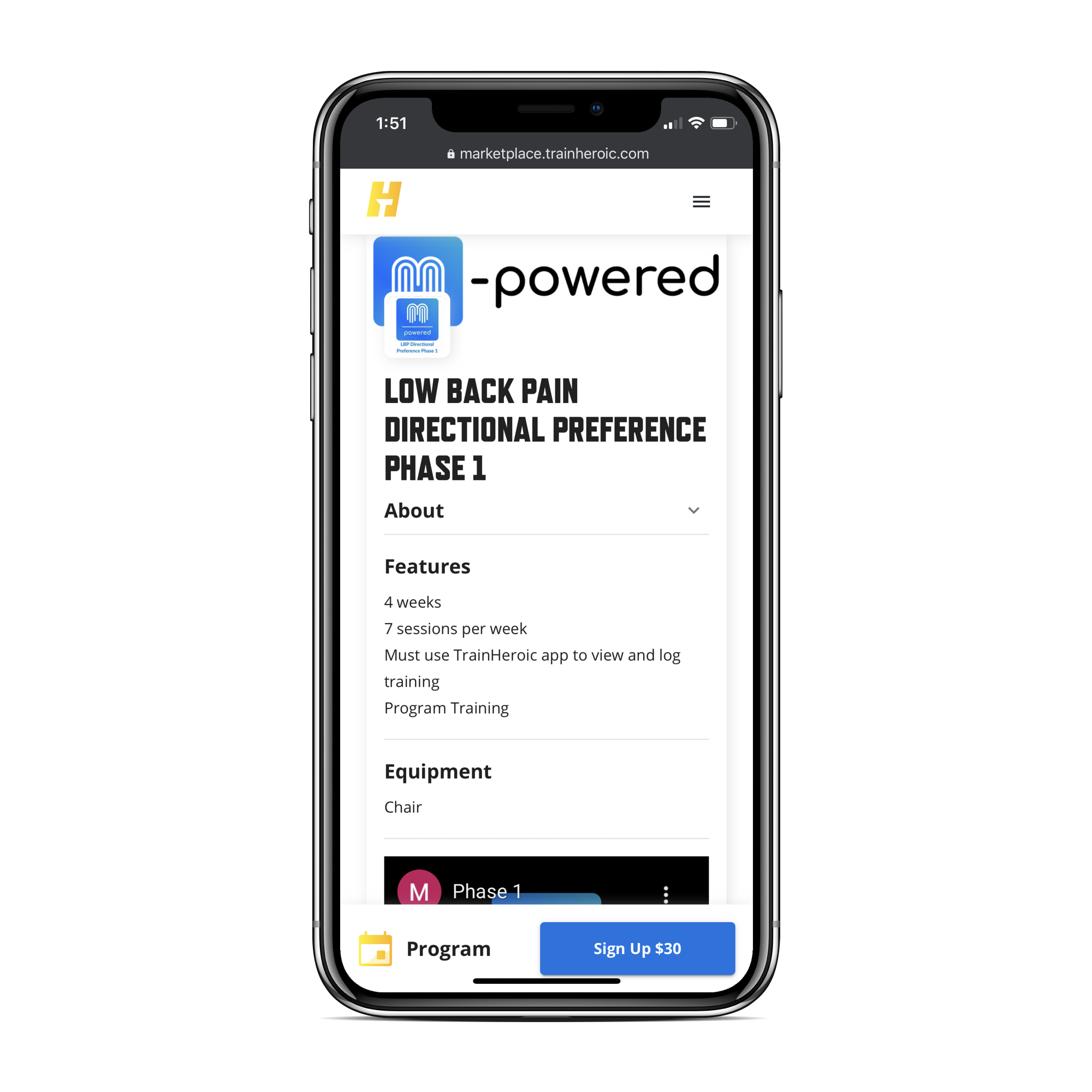Low back pain remains one of the constants in life, but thankfully is easily treated with Physical Therapy interventions including spinal manipulation, strength training, and directional exercise. Authors report 85-90% of low back pain symptoms cannot be attributed to any one tissue or pathology and remain non specific in nature. These findings, in part, have lead Physical Therapists to stop trying to identify the injured tissue and instead treat the patient’s signs and symptoms. This sub grouping approach has led to more successful conservative treatments and most importantly an accelerated recovery for patients.
In a smaller percentage of patients low back pain symptoms become persistent in nature defined as continued symptoms beyond 3 months. There is a gradual transition in the body’s tissues and nervous system leading to sensitization of low back pain tissues. Over time this increase in pain processing leads to higher levels of fear, decreased activity levels, and a lower tissue resilience to activity. Researchers have continue to utilize exercise in this population including strength training with more intense exercise (> 70% of 1 repetition max) showing more effective benefits on pain and disability than less intense exercises. A recent study shows just how effective high level exercises can be in this population.
Tjosvoll and colleagues published a study detailing the benefits of high level strength training in a group of patients with persistent low back pain (BMC Sports Science, Medicine, Rehab. 2020). Patients were included if they reported persistent low back pain (> 3 months duration with average > 4/10 pain) and had no prior experience with heavy weight training. All participants were divided into small groups of 3-5 participants overseen by a Physical Therapist. The first month of the trial consisted of instruction on proper technique and education progressing from broom sticks to light barbells. The next month began the strength training phase with patients undergoing a 16 week periodized training program using 4 exercises including bench press, pendlay row, deadlift, and squat.
Authors reported significant improvements in strength, pain, disability, and self efficacy after 8 and 16 weeks of strength training. They also performed a qualitative analysis of patient’s perceptions of the programs with participants reporting benefits in sleep, pain, daily function, energy levels, and sleep. Importantly, these individuals reported a change in their beliefs on the benefits of activity for persistent low back pain. Participants reported less fear and a higher belief in the benefits of strength training for their current symptoms.
Click Here to see which exercises are most effective for your back pain
Low Back Pain
Self Treatment Program


